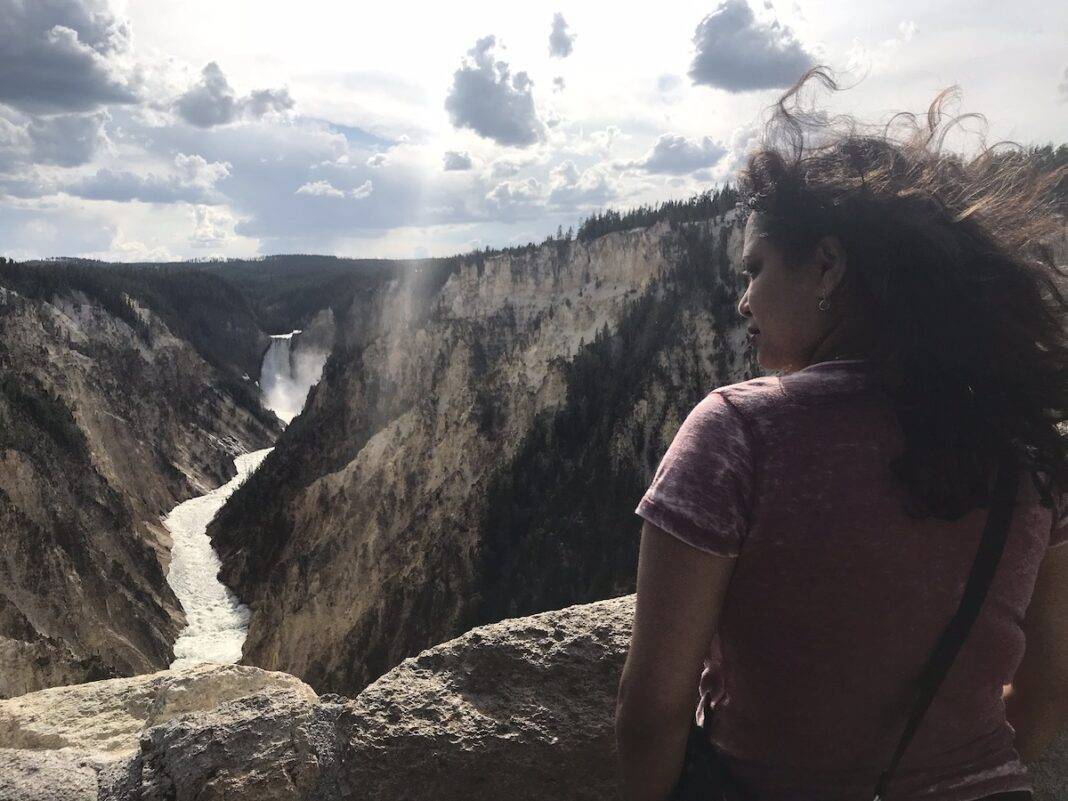The iconic park celebrated its 150th birthday recently with plans to protect it for another 150 years.
On a recent visit to Yellowstone National Park, I watched the red-furred baby bison flounder after its huge mother, the current carrying it a bit downstream before it managed to scramble up the far riverbank. Swim lesson accomplished. A wildlife viewing scope allowed me to gaze high above at an osprey keeping house, rearranging the sticks in her nest. Combine the phenomenal chances to see wildlife with crazy thermal features — steaming mud pots, stunning turquoise pools, jets of water spewing into the misty, sulfurous air — and you can understand why Yellowstone became our first national park. In 2022, the iconic park celebrated its 150th birthday, and, according to visitor stats, is more popular than ever. Unfortunately, more people plus rising temperatures equals a threat to a park we all love.
President Ulysses S. Grant signed the Yellowstone National Park Protection Act into law on March 1, 1872. Two decades later, in 1894, weather stations started collecting data in the Greater Yellowstone Ecosystem. This gives us one of the longest running records of temperature and rainfall in the US. That’s how we know that Yellowstone’s temperature has risen by 0.31°F/decade, consistent with global warming elsewhere.
Over the coming decades, this data tells us that Yellowstone will probably receive less snowfall. The snow that does accumulate will melt earlier. This will lead to reduced water in the Snake, Yellowstone, and Green rivers for recreation, agriculture, energy production, and drinking. These repercussions reach beyond Yellowstone, affecting millions far outside of park boundaries. Then there are the infamous wildfires, which have grown bigger in recent years. More insect infestations damage trees, threaten food supplies for wildlife, and feed the fires with dead wood.

It sounds like a grim future for a beloved park. But the National Park Service and its Yellowstone concessioner, Xanterra, aren’t giving up. Xanterra has worked hard on its sustainability initiatives, large and small. It reengineered the laundry service to drop water usage from three gallons to one third of a gallon per pound of linen. It ditched single-use plastic throughout its operations and sources goat cheese from a local family-run organic dairy. The New Canyon Lodges, completed in 2016, were the largest sustainable building project in National Park Service history. The new accommodations save 3.5 million gallons of water and 224,000 kilowatt hours of energy, and include cool eco features like bathroom countertops made of recycled glass and fly ash (a coal byproduct), and recycled wood fixtures crafted from regional pine beetle kill.
On my visit, I was impressed by abundant vegan options in park restaurants. At the Obsidian Dining room in the Old Faithful Snow Lodge, you can order organic golden quinoa and kale soup or linguine with spicy Thai peanut sauce. It was a far cry from my youthful park memories of hot dogs and hamburgers.
Of course, it will take all this and more to turn things around for a park—and a world—threatened by climate change. “Our business is dependent on the environment within the Greater Yellowstone Ecosystem,” said Xanterra sustainability director Dylan Hoffman. “And if we want to be in business for the next 150 years, protecting these resources is of paramount importance.”

So by all means, visit Yellowstone. But do it gently. As Hoffman puts it, speaking perhaps for all of us, “There’s no greater honor than being a steward of this place in order that future generations can enjoy and be inspired by the world’s first national park.”



Good write-up. I absolutely appreciate this site.
Continue the good work!
Hi, just wanted to mention, I liked this blog post.
It was practical. Keep on posting!
Howdy! I simply want to give you a big thumbs
up for your great information you have got here on this post.
I will be coming back to your site for more soon.
I enjoy what you guys are up too. This type of clever work and reporting!
Keep up the great works guys I’ve incorporated you guys
to blogroll.
I’m pretty pleased to discover this site. I want to to thank you
for ones time for this fantastic read!! I definitely loved every part of it and I have you book-marked to check out new information on your blog.
I remember my dad telling me about his trip to this grand park/ wilderness. Our family hails from NYC ( back several generations of living in the east ) I listen to his vivid accounts/ adventures, I so very much wanted to follow in his footsteps but time & circumstances got in the way of this dream/ desire .
Now I have grandchildren- sigh –
Thanks , I have recently been looking for information about this subject for ages and yours
is the greatest I have came upon so far. However, what about the bottom line?
Are you sure about the source?